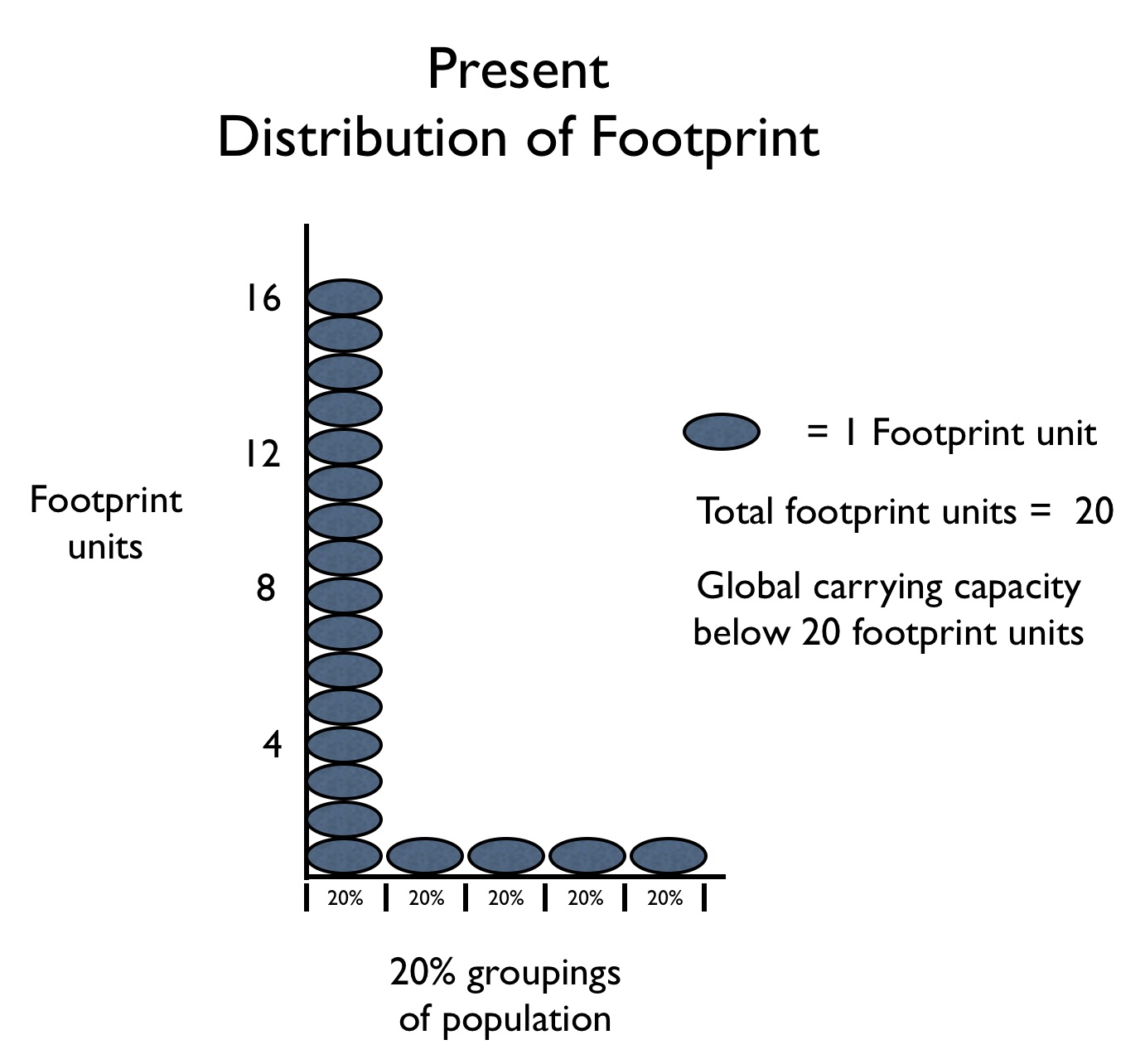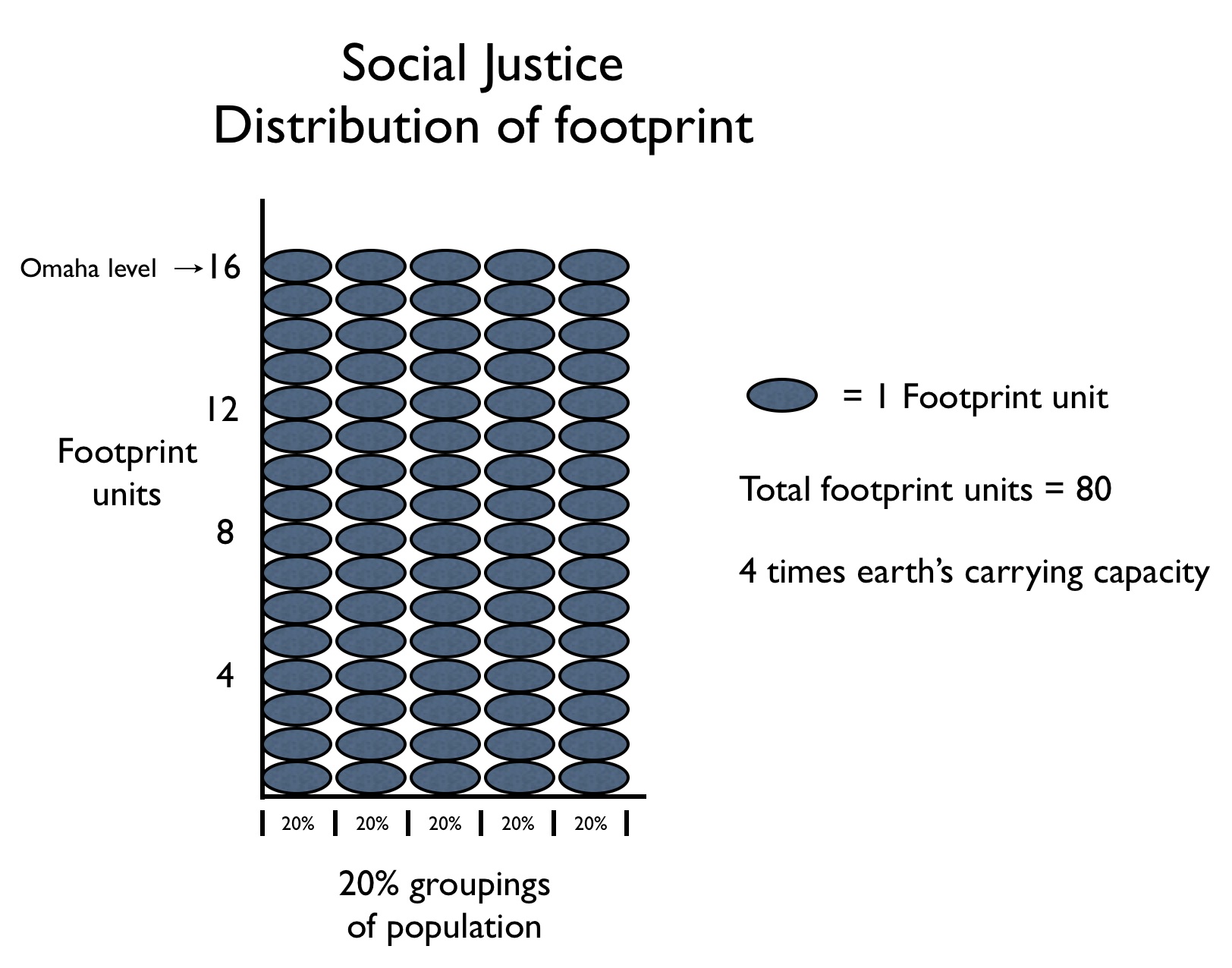To allow opportunity, sustainability, and justice, I suggest a global population of less than a hundred million.
The human community of 6.4 billion is somewhere near the fossil fueled carrying capacity of earth. If it were not, a billion people would not be starving.
Some might suggest, “The rich are not sharing.” However, the “have-nots” would not stop starving if the “haves” shared. Population increase, and others increasing their wellbeing would still increase the number starving.
Consider that 20% of the people in the world consume 80% of the world’s resources and 80% of the people consume 20% of the resources. The distribution of resources (footprint) looks like this.

The meaning of this disparity, becomes clearer if we hold the "have" group at their current footprint and allow the “have-nots” to raise their wellbeing to the level of the “haves.” The figure below describes the total human footprint for these policies.

When comparing the two figures, we see the total human footprint increased from 20 to 80 units.
Since today’s world, at 20 footprint units, is already running out of things like fossil fuel, and places to put our waste (like CO2), and some things such as fish don’t grow as fast as we are eating them, 80 footprint units would require the production facilities of 4 earths. Because we have only one, if we wanted to implement social justice, we would have to reduce population to one fourth of the 6.4 billion population or 1.6 billion.
Even a socially just world with 1.6 billion people would not be sustainable. We would still be consuming at today’s rates. We would still be approaching or in some cases exceeding the earth’s limits. To be sustainable human population would have to be smaller.
There are many ways to calculate how much smaller. Let’s use agricultural soil to describe a sustainable population. Most cultivation mines the minerals out of soil. Wind and water erosion carry soil away from fields. Consider the certainty that soil is being used up faster than nature makes it. If we want our soil to maintain its quality it might take 15 years to replace what one-year of farming removes.
For sustainable soil, 15 arable acres must be in replenishing mode for every acre that is farmed. In this theoretical world this translates to one sixteenth of the farm output and thus 1/16 of the 1.6 billion global population --- or 100 million people.
Other over-used resources produce both larger and smaller fractions but they are all fractions and thus fractions of 1.6 billion people. Which fraction should be used in the calculation of sustainability -- the smallest? Just like calculating the strength of a chain requires using the strength of the weakest link, using soil sustainability at 1/16 is a good way of arriving at 100 million -- unless there is some other variable whose fraction is smaller -- then the sustainable population would be less than a 100 million.
One more concept needs to be considered in the calculations of a sustainable human population. I don’t mean the obvious problems of running out of oil or accommodating climate change. There is a good chance that for less than 1% of the population we will find alternative energy sources and space to put our wastes. However, 100 million may be an unsustainable population because each individual would still strive to improve his or her personal wellbeing. Even the most non-egregious improvement, e.g. extending life span, would increase total human footprint above sustainability
It might follow that on our earth to maintain sustainability, and opportunity each improvement in wellbeing (not accommodated by increases in technological efficiency) would have to be matched with additional decreases in population below 100 million. In other words, as long as individuals strove to have a better wellbeing (not calculated in human companionship) the population would have to continuously decrease until the incremental value of human companionship exceeded the incremental improvement of material wellbeing.
